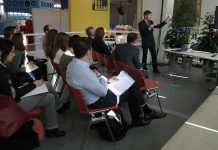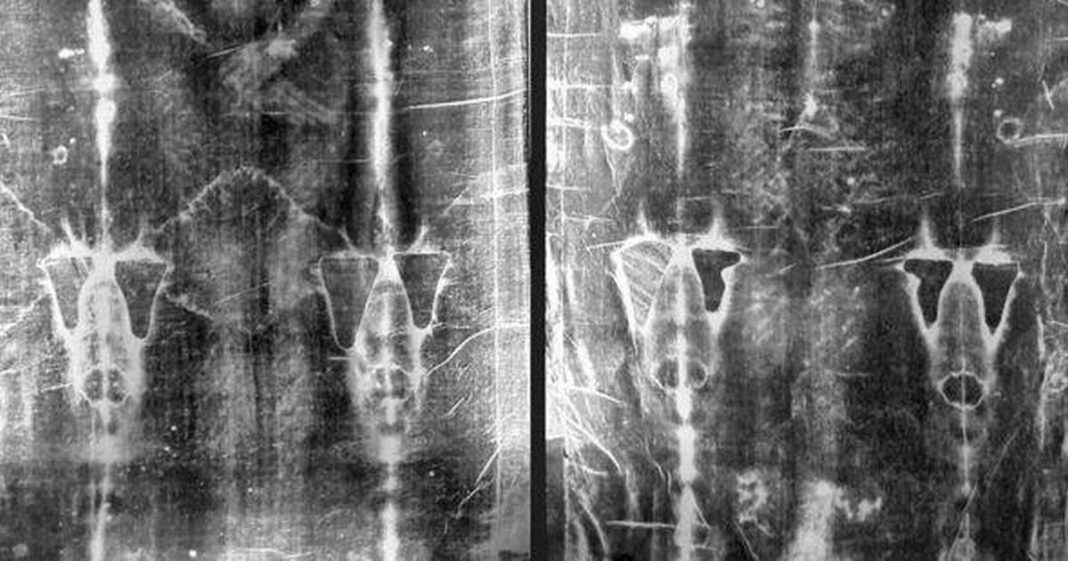The Shroud of Turin, believed to be the burial cloth of Jesus, has been the subject of intense scientific scrutiny for centuries – and one expert says he has solved the mystery
The Shroud of Turin is one of the most intensely scrutinised artefacts in history.
Presumed to be the burial shroud of Jesus after his crucifixion, its authenticity has been a subject of heated debate among scientists for years.
Although radiocarbon dating conducted in the 1980s pointed towards a medieval origin, some academics argue that the blood stains on the linen tell a different tale. This theory seems to challenge a recent assertion that The Shroud was ‘never laid on Jesus’.
Dr Jeremiah Johnston, a biblical scholar, revealed to the Tucker Carlson Network that tests from the 1990s identified blood type AB on the Shroud.
“The Shroud has type AB blood, identified as Semitic, present in only six percent of the population, confirmed as human and male, ruling out animal blood or a hoax,” Dr Johnston stated.
Sacred blood test
He also highlighted that the tests showed the blood was human and male, with both premortem and postmortem traces detected.
“You would have to actually kill someone if you were trying to reproduce the shroud because we have premortem and post-mortem blood all over the shroud,” Dr Johnston explained, reports the Express.
The existence of both pre- and post-mortem blood on the Shroud is peculiar, suggesting processes inconsistent with natural decomposition, which some interpret as being in line with resurrection accounts.
Christ’s blood type
The AB blood type was first recorded in 1982 by Italian biographer Dr Pierluigi Baima Bollone and his team, who analysed a sample from the Shroud’s pierced side.
Further testing also identified M, N and S antigens in blood from the foot area, confirming beyond doubt that the sample was human.
The team employed two methods to ascertain the blood type of the samples.
Initially, they tested for antibodies by placing fibres on slides, maintaining them at approximately 4°C for a prolonged period, adding A1 or B red blood cells and leaving them for half an hour.
These slides were then examined under a standard microscope, followed by a high-powered electron microscope after preserving the fibres in alcohol and giving them a gold coating.
Next, the researchers tested for antigens – particles that trigger the immune system to produce antibodies – using a mixed agglutination method.
Jesus’ face
The slides were kept cold for 24 hours with anti-A and anti-B serums, rinsed multiple times with saline and a bovine protein solution, added A1 or B red blood cells, and inspected under a regular microscope, followed by checks under an electron microscope.
The findings revealed that the Shroud’s bloodstained fibres contained both A and B antigens but no antibodies, suggesting type AB blood. Clean Shroud fibres showed no antigens, indicating they were devoid of blood.
Dr Johnston also informed Carlson that the Sudarium of Oviedo in Spain – the facecloth mentioned in John’s Gospel that covered Jesus’s face – was also found to have type AB blood.
This cloth bears no image. Only stains are visible to the naked eye, with additional detail observable under the microscope.
Contamination risk
However, Dr Kelly Kearse, an immunologist with extensive research on the Shroud of Turin, has cast doubt on the assertion that the blood on the Shroud is type AB.
Dr Kearse contended that the testing methods were not sufficiently controlled and could yield false positives due to contamination factors such as bacteria or the degradation of the blood over centuries.
“Regarding tests to determine blood type, it could be AB, but I really don’t think there’s any solid scientific evidence to back that up,” he penned in a 2020 study.
Dr Johnston estimated that approximately 700 wounds are discernible on the Shroud.
“This was a very badly wounded man, pints of type AB blood, all over it,” he stated, pointing out that the injuries are consistent with what is known about Roman crucifixions.
Scientists left scratching their heads.
Dr Johnston also drew attention to the image itself – a faint, full-body imprint of a bearded man.
“The image on the Shroud is only two microns thick and does not penetrate through the cloth,” he elaborated.
“If this were a hoax, painted or dyed, the material would have soaked through completely.
“Instead, the image is so thin we could shave it off with a razor. Even the world’s best scientists are baffled.”
He proposed that the imprint could have been created by a sudden chemical reaction sparked by an enormous energy surge, potentially corresponding to the moment of the Resurrection.
Powerful energy
Paolo Di Lazzaro, a physicist and laser specialist at ENEA Laboratories near Rome, dedicated five years to studying the Shroud.
His team successfully replicated the chemical alteration in the linen fibres using a colossal surge of 34 trillion watts of energy.
This fleeting “cold” energy, lasting merely a quarter of a billionth of a second, modified the linen’s structure to create the image on the Shroud, Dr Johnston elucidated.
The linen, measuring 14 feet long, was first publicly exhibited in the 1350s and touted as the actual burial cloth of Christ.
Despite radiocarbon dating in 1988 suggesting its origin between 1260 and 1390 AD, Dr Johnston argues that only a contaminated corner patch – not the original linen – was tested.
“The actual linen has never been radiocarbon dated, just the upper-left corner patch, which was contaminated,” he clarified.
Dr Johnston referred to the Shroud as “the most lied about and misunderstood artifact in the world” and expressed gratitude to Carlson for the chance to share his research.
For the latest breaking news and stories from across the globe from the Daily Star, sign up for our newsletters.
#Mystery #Turin #Shroud #solved #expert #Jesus #blood #group





















